The Most Unusual Menus From Libraries Around the World
Featuring fur, space flight, and Abraham Lincoln.
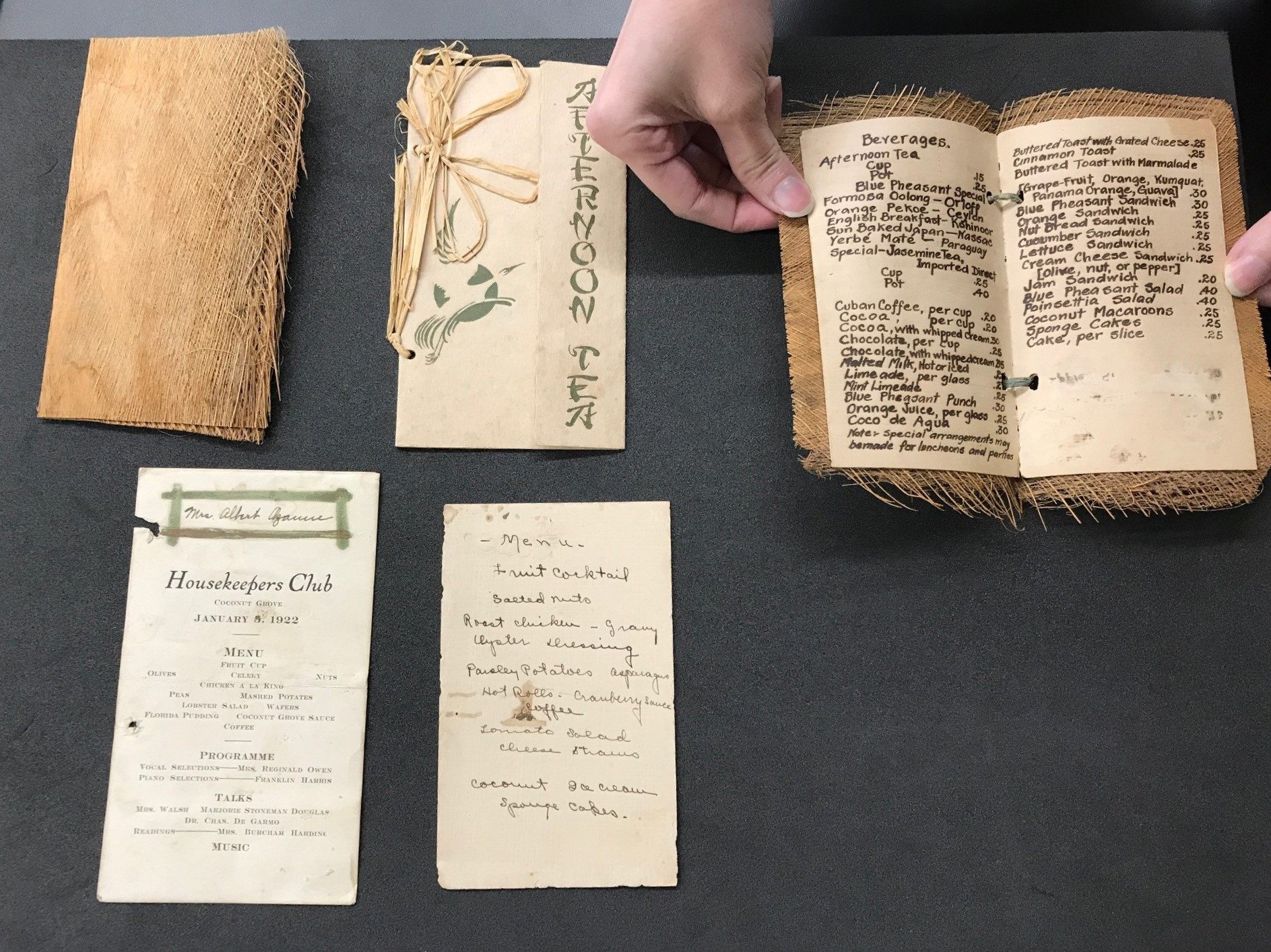
In scholarly circles, menus are called “ephemera,” along with sheet music, posters, and pamphlets. That is, they are paper with a transient purpose: printed to advertise, to sell, or to inform about an issue or upcoming event. As the term suggests, ephemera was never meant to last, and unbound paper is obligingly impermanent.
The history of the menu isn’t all that long, and its origins are murky. Menus were needed once restaurants became gathering places that served a variety of foods, starting in 18th-century Paris. Later banquets often provided printed menus as souvenirs for attendees, who could take a soup-spattered piece of paper home to dream about delicacies past. Today, nearly every restaurant has a menu, and some even let you take one home.
Not many libraries have menus collections, but they are still a vital part of the historical record that reveals tastes, trends, and even local environmental conditions. Menu collections are often passion projects, gathered by enthusiasts over a lifetime. Perhaps the most famous examples are Frank M. Buttolph, who collected 25,000 menus that eventually ended up at the New York Public Library, or Louis Szathmary, a chef whose collection is split between two universities and ranges from Abraham Lincoln’s second inaugural ball to a space-age feast. A quick tour through menu collections from around the world reveals a wide range of interesting or unusual holdings, from the elegant to the esoteric to the downright furry.
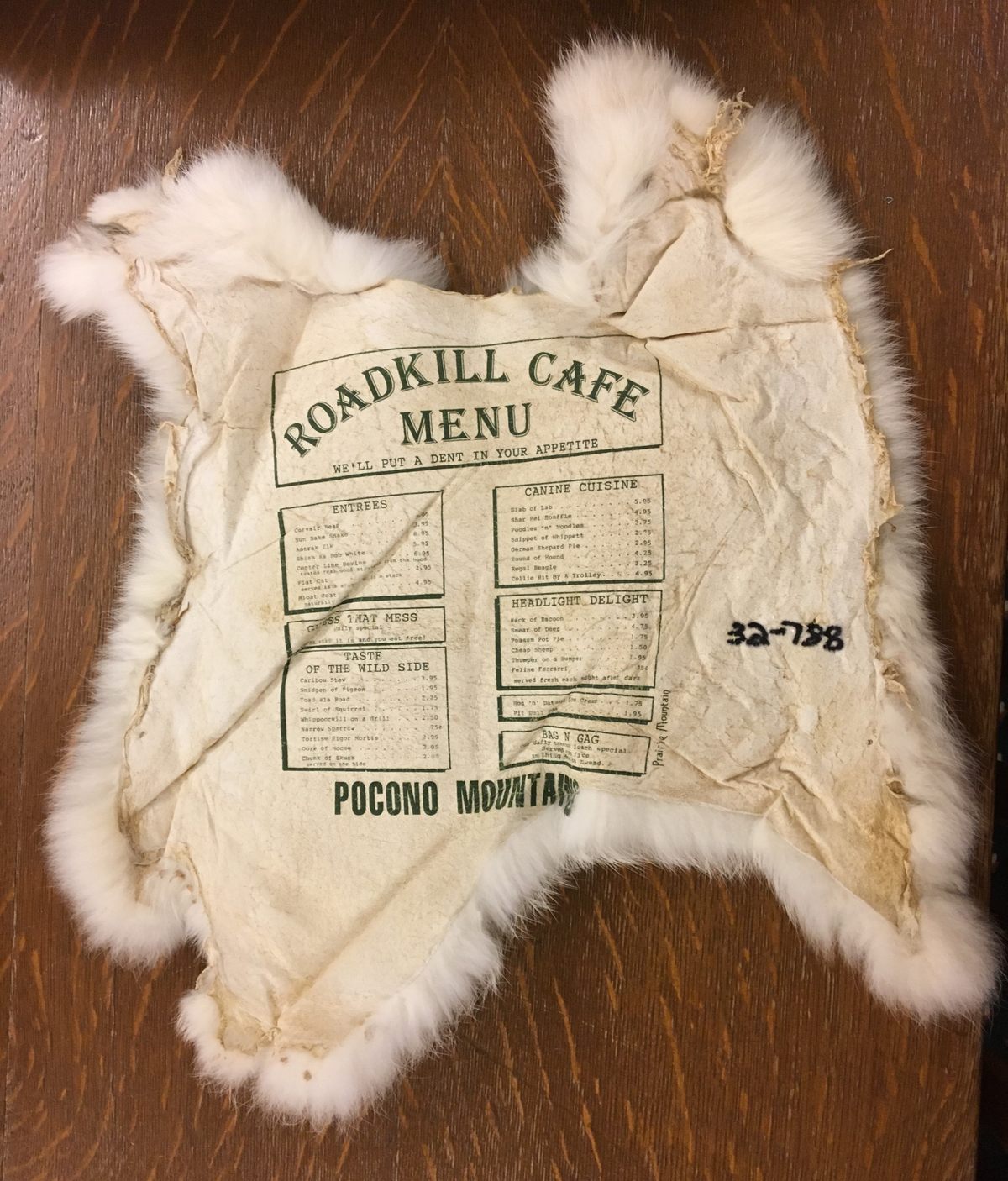
Conrad N. Hilton Library at the Culinary Institute of America
Roadkill Cafe Menu
The Conrad N. Hilton Library in New York is a part of the other CIA, the Culinary Institute of America. The library houses 30,000 menus from 80 countries dating back to 1855, and features notable examples from famed restaurateurs and chefs. But it also has this furry menu, which is a bit of a mystery. It was donated to the library by a Patty O’Neill, and it’s almost certainly a novelty item, offering delicacies such as “Flat Cat,” “Caribou Stew,” and a range of dog dishes, from “German Shepard Pie” to “Collie Hit by a Trolley.”
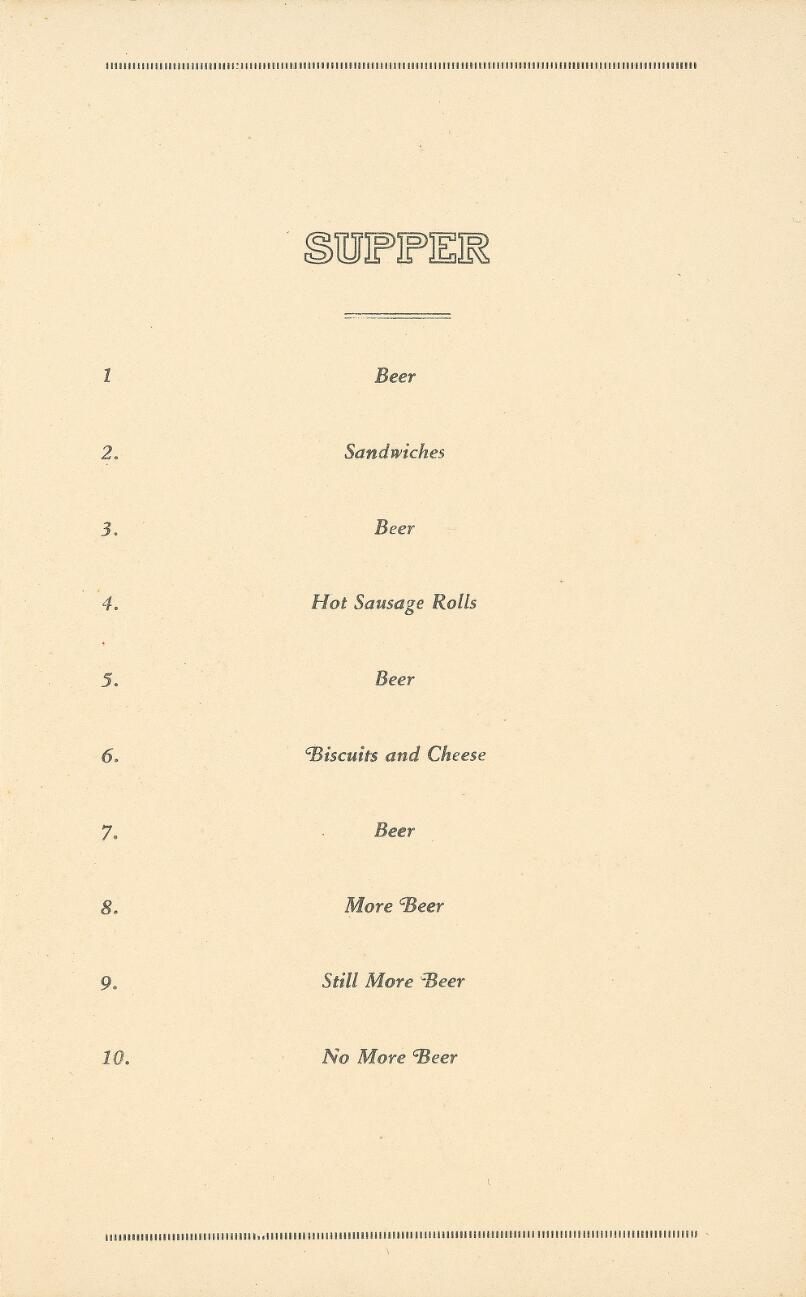
National Library of Australia
First Battalion A.I.F. Association Dinner Souvenir Menu, October 20, 1928
The National Library of Australia’s ephemera collection includes this menu for a reunion dinner of the First Battalion of the Australian Imperial Force (the full menu can be seen here). According to the Australian War Memorial, they were “the first infantry unit recruited for the AIF in New South Wales during the First World War.” At this beery memorial event 10 years after the end of the war, the guests of honor were famed aviators Charles “Smithy” Kingsford-Smith and Charles Ulm. Earlier that year, they had made the first transpacific flight—from Oakland, California, to Brisbane, Australia. Within ten years, both men had disappeared, their planes going down at sea.
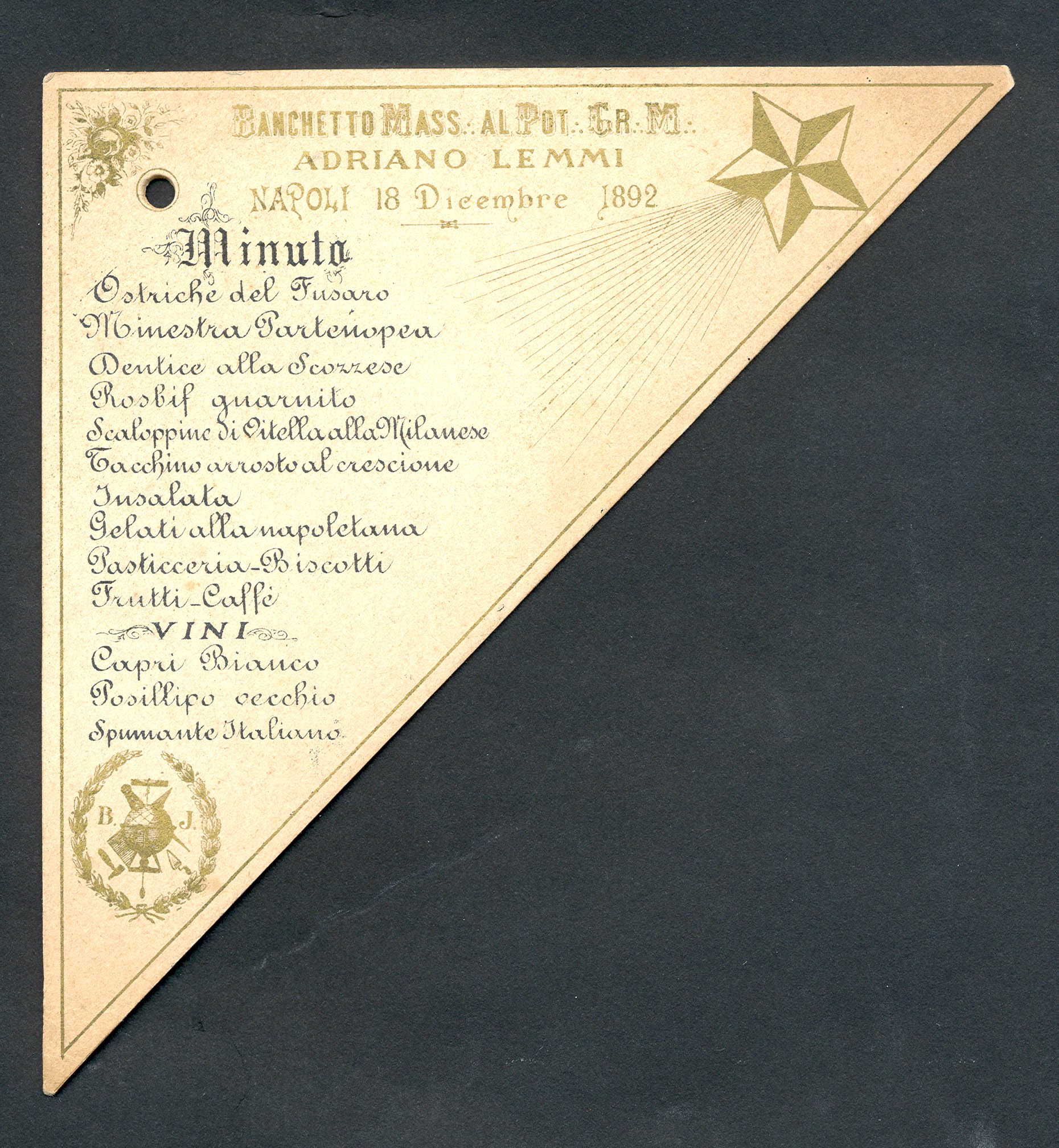
Biblioteca Gastronomica Academia Barilla
Freemason Grandmaster Banquet Menu, December 18, 1892
Barilla, along with being the world’s biggest pasta brand, also has a gastronomic library in Parma, Italy. Their menu collection clocks in at 5,000. This triangular menu, covered in arcane symbols, comes from a banquet held at the Naples Masonic Lodge in 1892 to honor the Grandmaster of the Grand Orient of Italy, Adriano Lemmi, a banker and merchant. It was a sumptuous affair, featuring the prized oysters of Lake Fusaro in Campania and hearty rosbif, or roast beef.
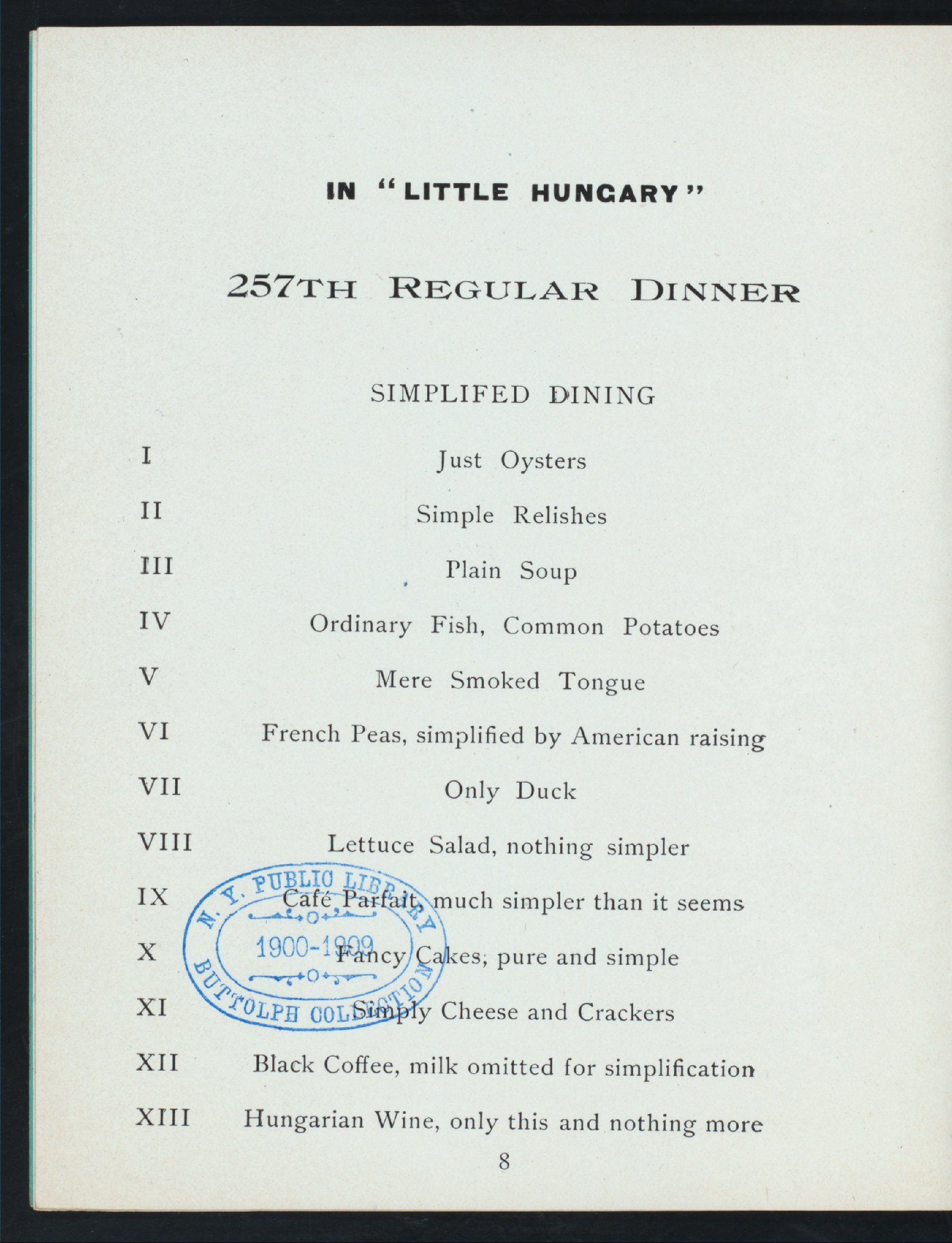
New York Public Library
Thirteen Club Menu, December 13, 1906
The New York Public Library has one of the world’s most prominent and public menu collections. Of its 45,000 menus, many are digitized and available online. More than 25,000 of them had been collected by Frank M. Buttolph in the early 20th century and, like the menu here, are marked with her trademark blue stamp. This menu is one of several from the Thirteen Club, a supper club whose goal was to rehabilitate the number 13 and make fun of superstition. Meals often had 13 courses, members sat 13 to a table, and dinners took place on the 13th of the month. The above “simplified” menu was probably a send-up of a concerted effort by philanthropists and politicians in 1906 to simplify American English for the benefit of society.
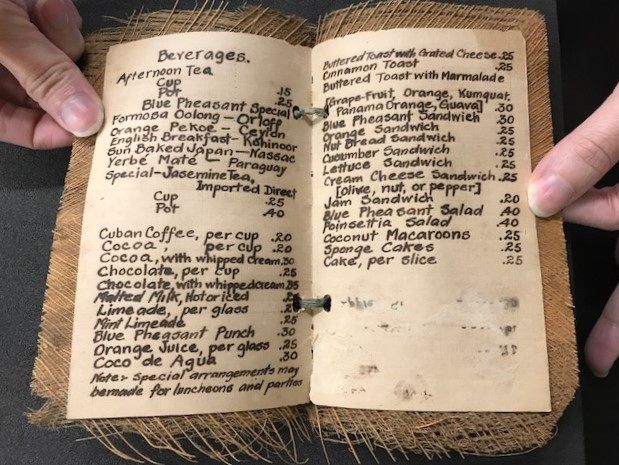
University of Miami Libraries
Blue Pheasant Tea Room Menu, 1921–23
From the Woman’s Club of Coconut Grove Records at the University of Miami comes this appropriately coconut-husk-wrapped menu. Founded as the Housekeepers Club in 1891, it is Florida’s first and oldest women’s organization. Flora McFarlane started the organization to ease the isolation of homesteading women in the still-rural Miami area. Over more than a century, the club has supported environmental preservation in the Everglades and lobbied for social welfare issues in the state and abroad. This menu came from the Club’s Blue Pheasant Tea Room, which, according to the Club’s website, was operated in the early 1920s as a fundraising venture.
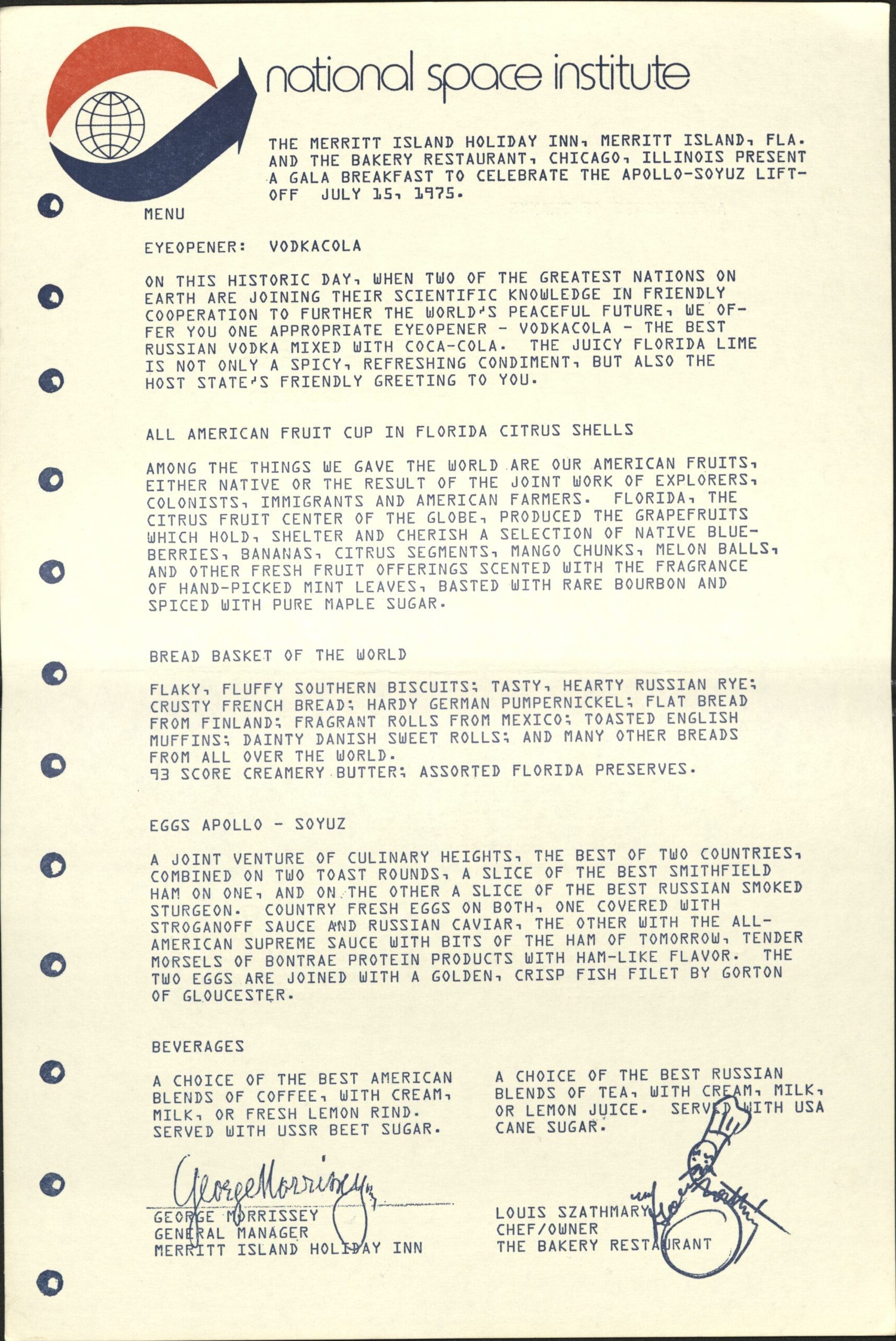
University of Iowa
Menu from National Space Institute Gala Breakfast to Celebrate the Apollo-Soyuz Lift-Off, July 15, 1975
Hungarian-American chef Louis Szathmary had quite a life. His collection of cookbooks, menus, and cooking-related objects, which numbered in the hundreds of thousands, took up 31 rooms. A celebrity chef with an equally famous restaurant, Chicago’s The Bakery, Szathmary created the menu for this breakfast gala, a celebration of the first joint U.S.-Soviet space flight. The collaborative spirit was epitomized by the cocktail of choice, Russian vodka mixed with American Coca-Cola. A dish created for the occasion was Eggs Apollo-Soyuz, with all-American Smithfield ham and Russian sturgeon. The dish also includes stroganoff sauce and Bontrae, a soy-based “ham of tomorrow.” The menu is signed with Szathmary’s iconic caricature-signature.
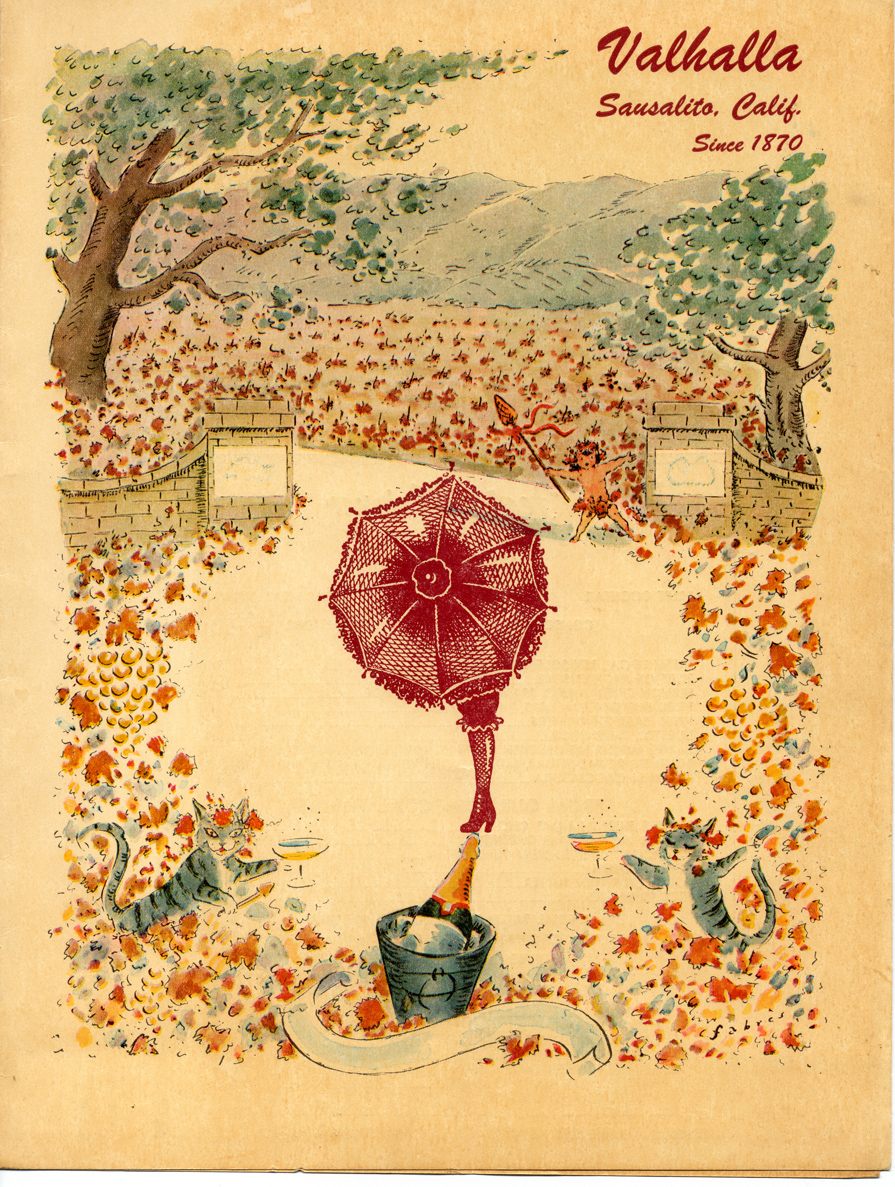
Los Angeles Public Library
Valhalla Restaurant Menu, 1950s
The Los Angeles Public Library has almost 16,000 menus in its archives, many of which have been digitized. One of the highlights of their collection is this menu from Valhalla, a long-gone restaurant in Sausalito, California. Though founded in 1870, the restaurant was given a new lease on life in 1950 when it was purchased by Sally Stanford, a famous San Francisco madam whose notorious, popular brothel was shut down the year before. Valhalla advertised itself as the haunt of movie-makers, rum-runners, and Jack London, while serving high-end American cuisine. (The whole menu is visible here.) In 1976, Stanford was elected mayor of Sausalito.

Culinary Arts Museum at Johnson and Wales University
Abraham Lincoln’s Presidential Inauguration Ball Bill of Fare, March 6, 1865
The Culinary Arts Museum isn’t open to the public; it’s a resource for students and researchers. But many of its 200,000 objects of culinary interest are digitized and available online. Louis Szathmary donated much of his collection to Johnson and Wales, including this menu for the Presidential Ball celebrating Lincoln’s second term in office. Szathmary believed this menu to be only one of three still in existence. It features typical high-end American cuisine of the time, including terrapin, renowned for its luscious taste. Other dishes included ornamental pyramids of “nougate” or “cocoanut” and “white coffee” ice cream. When the banquet was served at midnight, guests descended on it in a frenzy, creating a huge mess. Chillingly, this boisterous feast came a little more than a month before Lincoln’s assassination.
Gastro Obscura covers the world’s most wondrous food and drink.
Sign up for our regular newsletter.







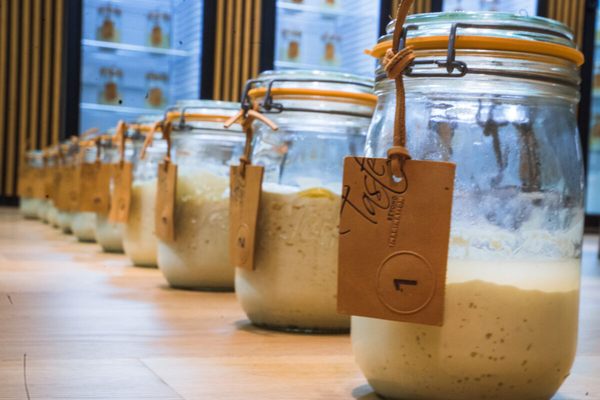



















Follow us on Twitter to get the latest on the world's hidden wonders.
Like us on Facebook to get the latest on the world's hidden wonders.
Follow us on Twitter Like us on Facebook